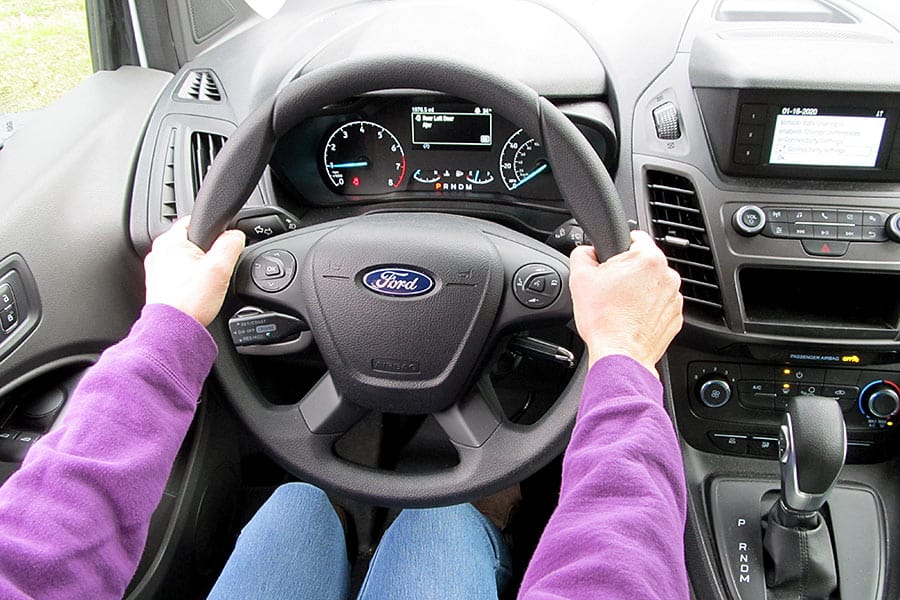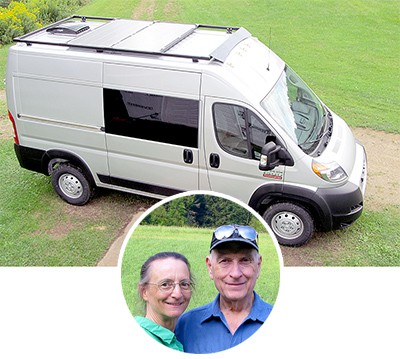
Camper vans offer a house on wheels that allows you to travel and camp all over the country. They’re less expensive than a motorhome, and you can have countless adventures without needing a tent or a backpack. However, they’re somewhat larger than your standard car or pickup, therefore a bit more challenging to operate.
So, can anyone drive a camper van? Yes and no. Technically, anyone can drive most camper vans in the USA. However, some states have minimum age requirements, and some rental companies require that drivers be 21 years of age. Usually, any vehicle under 26,000 pounds requires no special driver’s license though this may vary between the states.
For the most part, it’s safe to say that anyone can drive a camper van. Before you buy or rent your first one, let’s review a few suggestions below to help get you started.
Restrictions For Vans and RVs
Depending on the city, state, and country that you’re renting or buying a van in, you might find some restrictions. Checking local regulations will be the best way to proceed before buying or renting a camper van.
It should be noted that RVs have law restrictions as well. For example, a couple of states require a CDL if you want to operate a vehicle over 26,000 pounds. Also, a few other states require a CDL for campers longer than 45 feet. It all depends on where you live and where you intend to drive the camper van or RV.
Class B licenses are required by California law if you want to use an RV over 40 feet. You’ll also find that a few other states, such as Illinois, Wisconsin, and North Carolina, have weight limitations that require a Class B license as well. Illinois residents need a special license for vehicles as low as 16,000 pounds, which is one of the lowest requirements in the country.
Finally, states such as New York and Michigan require you to have a special ‘R’ endorsement for specific RVs and camper vans. Michigan’s law states that you need the letter if you’re towing anything behind your RV or camper van. New York requires the ‘R’ if the overall weight (including your items stored inside) exceeds 26,000 pounds.
Other than that, there aren’t many laws that stop people from driving camper vans. You’ll have to follow the age restrictions, of course, but those pertain to any vehicle. If the high weight of driving a camper van makes you feel a bit worried, proceed to the next section for a handful of useful tips.
Van Camping Life Tip: Do you know what gross vehicle weight rating (GVWR) means? This is used to describe the total weight of your camper van including contents and passengers.
Other Posts of Interest
- Do Camper Vans Get Stolen? A Guide To Preventing Theft
- Why Are Camper Vans So Expensive?
- Ram ProMaster vs. Mercedes-Benz Sprinter: Which Is Right For You?
Driving Tips For New Camper Van Drivers
Don’t let the high weight of a camper van scare you. Some of them can exceed 10,000 pounds, but you shouldn’t be worried. Since they often come with powerful engines (V8 or V10), you’ll have everything you need to accelerate and stay up to speed.
However, there’s undoubtedly a learning curve if you’ve never driven a large vehicle. The closest comparison is a regular passenger or cargo van. You might also compare it to the feeling of driving a big pickup truck. If you’ve ever driven a moving truck or a semi-truck, you’ll have no problem at all.
Here are the six essential tips to keep in mind when you’re operating a large camper van:
Get bubble mirrors to add to the side mirrors on your camper van. You’ll need to be able to see a wider angle, which is precisely what these additional mirrors add. Place them on the bottom or top of the far side of the mirrors. For example, the driver’s side bubble mirror should be on the top-left, whereas the passenger bubble mirror should be on the top-right.
Always leave extra room when you’re turning a corner, pulling into a parking lot, or parking the camper van. The length, width, and height all require additional space. Try to start a turn when the corner is at the front of the camper van’s rear tire. This practice will give you enough room to turn safely or park without nicking the sidewalk.
The slow lane is your new best friend. There’s a reason that most RVs and camper vans don’t hang out in the fast lane. Although equipped with big engines, you still have to push harder to get up to speed. By the time you have to slow down, everyone else is already accelerating again. Get used to cruising around 55 on the highway.
You’ll also have to go into fast-food restaurants and other places that have low-hanging covers. The drive-thru is always fun and quick, but you don’t want to scrape the roof of your camper van for a burger. On that note, keep a watchful eye out for overpasses, bridges, and tunnels.
Leave the appropriate space between your van and the vehicle ahead of you. Since your vehicle is somewhat larger and heavier than a car, it takes longer to slow down and stop or worse, and you might not even be able to stop in time.
A good rule of thumb, keep a buffer zone of at least 3 seconds between your vehicle and the vehicle ahead of you. If the road conditions are less than the ideal or at night, increase that buffer zone to 4-5 seconds. Remember, your ability to stop in time is going to be affected by your speed and road conditions, so don’t follow too close.
We also have a post, “Can A Passenger Sleep In A Moving Camper Van?” that will provide you with more information if you’re considering buying or renting a camper van.
Don’t Forget!
Camper vans are very similar in many ways to other vehicles, but they’re a completely different breed otherwise. Most cars don’t have bathrooms, beds, sinks, refrigerators, or stoves. Before you start the camper van, do a quick double-check to secure everything in place.
To make it even easier on yourself, think about buying cabinet restrictors and a lock for the fridge. The last thing you want to occur is to have everything fly out when you hit the brakes. If you’re going into a tunnel or an extended closed-off area when you’re driving, turn off all of the propane tanks in your vehicle.
Unfortunately, there’s not much you can do to prevent the bedding from moving around a little. You might find a pillow on the floor, but unless you’re exceeding the speed limit and making sharp turns, everything else should stay in place.
If you have fans, solar panels, or other items on top of the camper van, keep them in mind when you’re parking under trees. They’re all durable, but you shouldn’t let them get scratched and continuously scuffed. Try to find a parking spot that’s out in the open. It might be easier for you to park in the rear of parking areas since there’s less traffic to deal with.
As a final suggestion, if you’re driving with pets, get them a crate. When your cat or dog is standing in a moving vehicle, they can get hurt. Whether you’re turning or hitting the brakes, their joints and muscles aren’t made to withstand the force. They can get bruised or have misplaced elbows and ankles without a crate.
Here is an option for a travel soft-sided dog crate to keep your pet safe while on the road.
Final Thoughts
Generally, almost anyone can drive a camper van. Regardless, it would be best if you always check the local laws, restrictions and requirements on driving a camper van. Since camper vans don’t exceed the weight limit of 26,000 pounds, there should be no special driver’s license requirements needed in most areas.
Here’s a list of the key takeaways from this post:
- Always leave more room when you’re turning or parking a camper van.
- Check the weight, length, and passenger laws in your city and state.
- Don’t forget about the height, length and width of your vehicle when you’re driving in tight spaces.
Van camping is an exciting way to explore the country, don’t be intimidated by the size and unfamiliarity of driving a camper van. Just allow yourself time to get used to driving an unfamiliar vehicle, obey the traffic laws, and you should have no problems at all.






